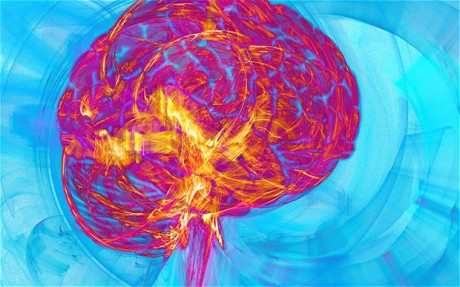
《柳叶刀》杂志(The Lancet)发表的一项研究显示,脑电图(EEG)能够检测到植物人的隐匿性意识。
这项研究由西安大略大学的Damian Cruse博士及其同事进行,共纳入16例根据行为指标诊断的植物人和12例健康对照者。这些植物人在年龄、性别、损伤原因和损伤病程方面均有所差异。在16例患者中,5例发生创伤性脑损伤,2例发生卒中,其余发生缺氧。
研究者反复要求所有受试者在哔音提示下想象紧握右手或扭动脚趾的动作。然后通过EEG测定受试者对命令的反应。EEG检查结果显示,植物人组中有3例患者能够反复且确实地对2种不同命令产生反应。这3例产生反应的患者均为男性,年龄为29~45岁;2例被诊断为创伤性脑损伤,1例为缺氧性脑损伤。对照组有9人产生被确认为非偶然性的EEG反应,但有3人未产生反应,研究者不清楚确切原因。不过,研究者指出,这也说明EEG未检测到反应并不一定意味着没有意识。尽管创伤性脑损伤患者的中位年龄比非创伤性脑损伤患者小(29岁vs. 44岁),但患者年龄或临床病史与其产生反应的能力之间没有显著关系。
研究者表示,基于研究设计和观察到的预后,所检测到的反应模式基本不可能为不自主性或自动性。与同样能够检测植物人的轻微意识的功能性磁共振成像(fMRI)相比,EEG具有应用方便、费用少且不受金属植入物影响等优点。
在随刊述评中,丹麦奥尔堡大学的Morten Overgaard博士和奥胡斯大学的Rikke Overgaard指出,上述研究结果明确表明,至少一些植物人并未完全丧失意识。由于12名健康对照者中有3名(25%)未产生明显的EEG反应,因此这种下达命令的做法对于检测意识有无的针对性并不强(Lancet 2011 Nov. 10 [doi:10.1016/S0140-6736(11)61591-2])。
该研究获医学研究理事会等多个机构资助。研究者和述评作者均声明无经济利益冲突。
相关英文论文摘要:
Bedside detection of awareness in the vegetative state: a cohort study
Background Patients diagnosed as vegetative have periods of wakefulness, but seem to be unaware of themselves or their environment. Although functional MRI (fMRI) studies have shown that some of these patients are consciously aware, issues of expense and accessibility preclude the use of fMRI assessment in most of these individuals. We aimed to assess bedside detection of awareness with an electroencephalography (EEG) technique in patients in the vegetative state.
Methods This study was undertaken at two European centres. We recruited patients with traumatic brain injury and non-traumatic brain injury who met the Coma Recovery Scale-Revised definition of vegetative state. We developed a novel EEG task involving motor imagery to detect command-following—a universally accepted clinical indicator of awareness—in the absence of overt behaviour. Patients completed the task in which they were required to imagine movements of their right-hand and toes to command. We analysed the command-specific EEG responses of each patient for robust evidence of appropriate, consistent, and statistically reliable markers of motor imagery, similar to those noted in healthy, conscious controls.
Findings We assessed 16 patients diagnosed in the vegetative state, and 12 healthy controls. Three (19%) of 16 patients could repeatedly and reliably generate appropriate EEG responses to two distinct commands, despite being behaviourally entirely unresponsive (classification accuracy 61—78%). We noted no significant relation between patients' clinical histories (age, time since injury, cause, and behavioural score) and their ability to follow commands. When separated according to cause, two (20%) of the five traumatic and one (9%) of the 11 non-traumatic patients were able to successfully complete this task.
Interpretation Despite rigorous clinical assessment, many patients in the vegetative state are misdiagnosed. The EEG method that we developed is cheap, portable, widely available, and objective. It could allow the widespread use of this bedside technique for the rediagnosis of patients who behaviourally seem to be entirely vegetative, but who might have residual cognitive function and conscious awareness.
Funding Medical Research Council, James S McDonnell Foundation, Canada Excellence Research Chairs Program, European Commission, Fonds de la Recherche Scientifique, Mind Science Foundation, Belgian French-Speaking Community Concerted Research Action, University Hospital of Liège, University of Liège.
英文论文链接:https://www.thelancet.com/journals/lancet/article/PIIS0140-6736(11)61224-5/fulltext







